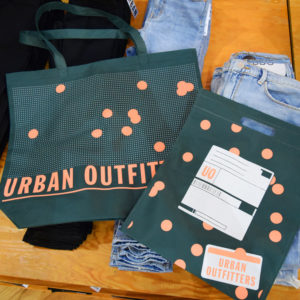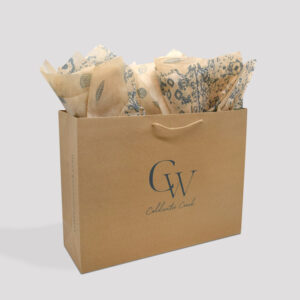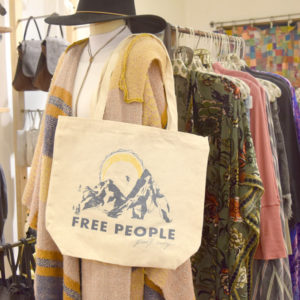







Earth Day 2020 is celebrated annually on April 22 in 193 countries. Each year, Earth Day is the world’s largest environmental movement. Today promotes ecological awareness to further protect and conserve our planet. Now is the ideal time of year to fully celebrate Earth Day 2020 by staying environmentally conscious when it comes to everyday life. From being mindful about climate change to slowly switching from disposable to reusable packaging, and biodegradable packaging, there is something we all can do to conserve the environment. Moreover, today marks the 50th anniversary of Earth Day.
Even though celebrating Earth Day may feel a little bit different this year, we are still finding ways to celebrate. Due to social distancing regulations, many have taken to virtual meeting platforms to keep the spirit of the day going. Many countries are offering virtual Earth Day events (you can even find a digital Earth Day event here). Because we are staying home, pollution has dropped in many major cities, and wildlife is coming back. Now is our chance to continue to change our habits for a cleaner Earth.
Earth Day 2020: Climate Action
According to the Earth Day Network, the theme for this year’s Earth Day 2020 is climate action. Above all, climate change is a pressing topic currently and represents the biggest challenge to our Earth’s future. Collectively, many of us are taking the necessary actions to do our part in cutting down on non-recyclable waste.
A few easy ways to do your part in the fight against climate change are to first, invest in renewable energy sources. The global push for cleaner, healthier energy is the new trend. In an attempt to lower their carbon footprints, major retailers like Target, Kohls and Walmart are installing solar panels on the roof of their stores.
Green and Reusable Packaging
In addition to renewable energy, many other retailers like Darien Sports as well as Lou & Grey, for example, have made the switch from single use to reusable shopping bags. Due to having reusable shopping bags in store, customers can reduce their carbon footprints by keeping and reusing the bags.
Similar to reusable and synthetic materials, recyclable papers containing post-consumer waste are also an option when creating eco-friendly packaging. Constantly recycling and reusing these materials will limit the amount of waste that enters landfills. In an attempt to keep unnecessary waste out of landfills, many cities now, have bag ban regulations in place. Therefore, these regulations ensure your packaging materials are recyclable or reusable. These bans make sure all retail bags have the correct amount of post-consumer waste, and follow the proper recycling regulations. Most bags made with post-consumer waste materials are FSC® Certified.
Responsibly Sourced Papers
In order to abide by bag ban regulations put into place by many cities and states, companies are creating their paper shopping bags from FSC® Certified papers. There are many advantages to using FSC® certified paper in your products. Not only does it protect the environment, but FSC certified paper is conveniently available in all US markets. For those who want to stay greener when creating paper shopping bags, the cost of certification from the FSC® is not a huge expense.
Over the years, FSC® certified paper has become more commonplace. But there is still a certification process to follow in order to use it. There are two types of certifications you can get, one for Forest Management and one Chain of Custody, which is what people will use if they have products or packaging that uses FSC® paper. For a Chain of Custody certification, everyone from the forest, paper manufacturer, merchant, printer to the end user involved in manufacturing or trading FSC® products, must be certified. They can do this if they sell less than $5 million of wood products and by contacting an FSC® accredited certification body.
While responsibly sourcing materials, like FSC® Certified papers, the recycling process is made easier. From paper to plastic bottles, these materials are easily recyclable through either the single stream recycling process or a more in-depth process. Recycling these materials gives the product a second life.
Single Stream Recycling
The single stream recycling process is also known as “single-sort” recycling. This refers to a system in which paper fibers, plastics, metals and other containers mix in a collection truck and sort separately throughout the collection process. When it comes to single stream recycling, both the collection and processing procedures are able to handle a full mixture of recyclable material.
Changing to a single-stream recycling process may provide an opportunity to update the collection and processing systems. This allows the process to add new materials to the ongoing list of recyclables that are acceptable. This will also allow more paper grades for recycling, including paper shopping bags, junk mail, as well as mixed paper. A more in depth recycling process also gives plastic bottles a second life – turning them into rPET fabric. With the use of eco-friendly shopping bags, and the recycling process, you too can do your part in the preservation and protection of our planet.
rPET
Recycled Polyethylene Terephthalate (rPET) is a newer sustainable material. Also commonly known as polyester, rPET can contain either pre or post-consumer waste, making it the ideal recyclable fabric for reusable shopping bags. This material is the perfect fabric to consider when creating Earth Day 2020 inspired packaging. Companies like Marmi have created tote bags out of this material for a fashionable yet sustainable packaging item.
RPET is incredibly easy to recycle. PET bottles are also easy to distinguish by their “#1” recycling label. Plastic bottles with this label are acceptable for most recycling plans. Reusing plastic not only provides a better option than landfills, but it helps give it a second life. Recycling the plastic into these materials also has the ability to decrease our need for using new resources. Over half of first time PET production can create polyester fabrics. By using recyclable PET, we are decreasing the need to create new polyester textiles.
Plastic bottles take about 700 years to decompose, so getting them out of landfills and waterways is extremely important. When degrading, the bottles do not completely break down, and as a result become tiny micro-plastic pieces. Even if we cannot see them, they still harm the ecosystem. Recycling materials like water bottles and old shopping bags are a great start to celebrating Earth Day 2020. Having reusable materials like these drastically cuts down the need for single-use items.
Go Green For Earth Day
Keeping your Earth Day 2020 inspirational packaging on trend is as easy as choosing the materials to create your sustainable packaging. Featuring this season’s newest trends will create a fashionable design your customers will love. Adding finishing touches like braided handles, embroidery or custom closures to your eco-friendly shopping bags is made simple, and can take your Earth Day 2020 packaging to the next level.
Finally, Earth Day 2020 has become more than just another day on the calendar. Consequently, it has become a historic movement when global citizens become more aware of how their decisions affect the environment. However, the lessons we learn on Earth Day can apply year round. From switching to reusable packaging to learning about renewable energy, making small changes is a great start in making a bigger, positive impact on the world.



